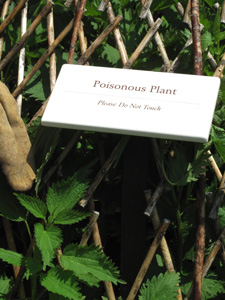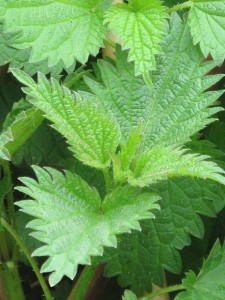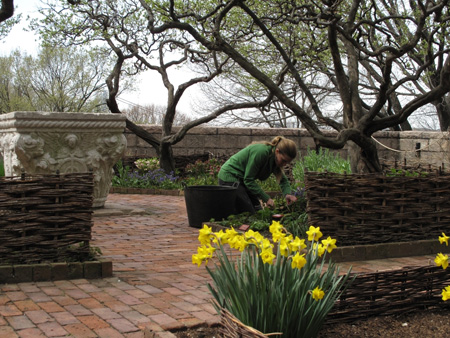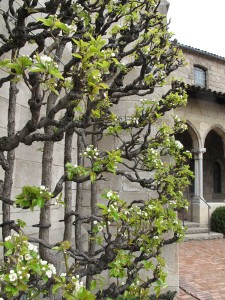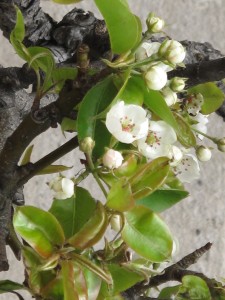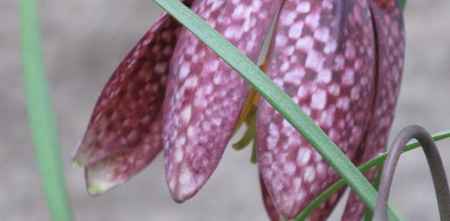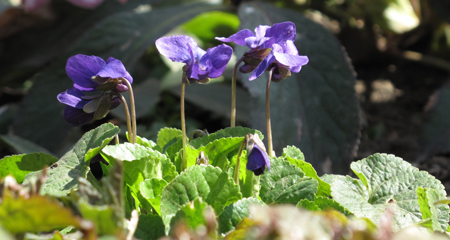Grasping the Nettle
Leather gauntlets are required when handling the stinging nettles grown in Bonnefont garden. The nettles grow in the middle of a raised bed, where visitors won’t brush against them inadvertently, and are caged with willow and labeled as an additional safeguard (see full image). Photographs by Corey Eilhardt
But this little patch which lies facing east
In the small open courtyard before my door
Was full ??? of nettles! All over
My small piece of land they grew, their barbs
Tipped with a spear of tingling poison.
What should I do? So thick were the ranks
That grew from the tangle of roots below,
They were like the green hurdles a stableman skillfully
Weaves of pliant osiers when the horses hooves
Rot in the standing puddles and go soft as fungus.
So I put it off no longer. I set to with my mattock
And dug up the sluggish ground. From their embraces
I tore those nettles though they grew and grew again.???From Hortulus by Walahfrid Strabo. Translated from the Latin by Raef Payne. The Hunt Botanical Library, 1966.
The stinging nettles in Walahfrid’s monastery garden were clearly unwanted, but Urtica dioica is carefully cultivated in Bonnefont Cloister garden. A common perennial weed of moist soil and disturbed ground, stinging nettle is widely distributed throughout Europe, Asia, and North America, having crossed the ocean with the earliest English settlers. (See the U.S.D.A. database for more information). Nettles thrive on the phosphates that are a product of human habitation and animal husbandry, and are often found near long-abandoned settlements and waste dumps. Read more »

